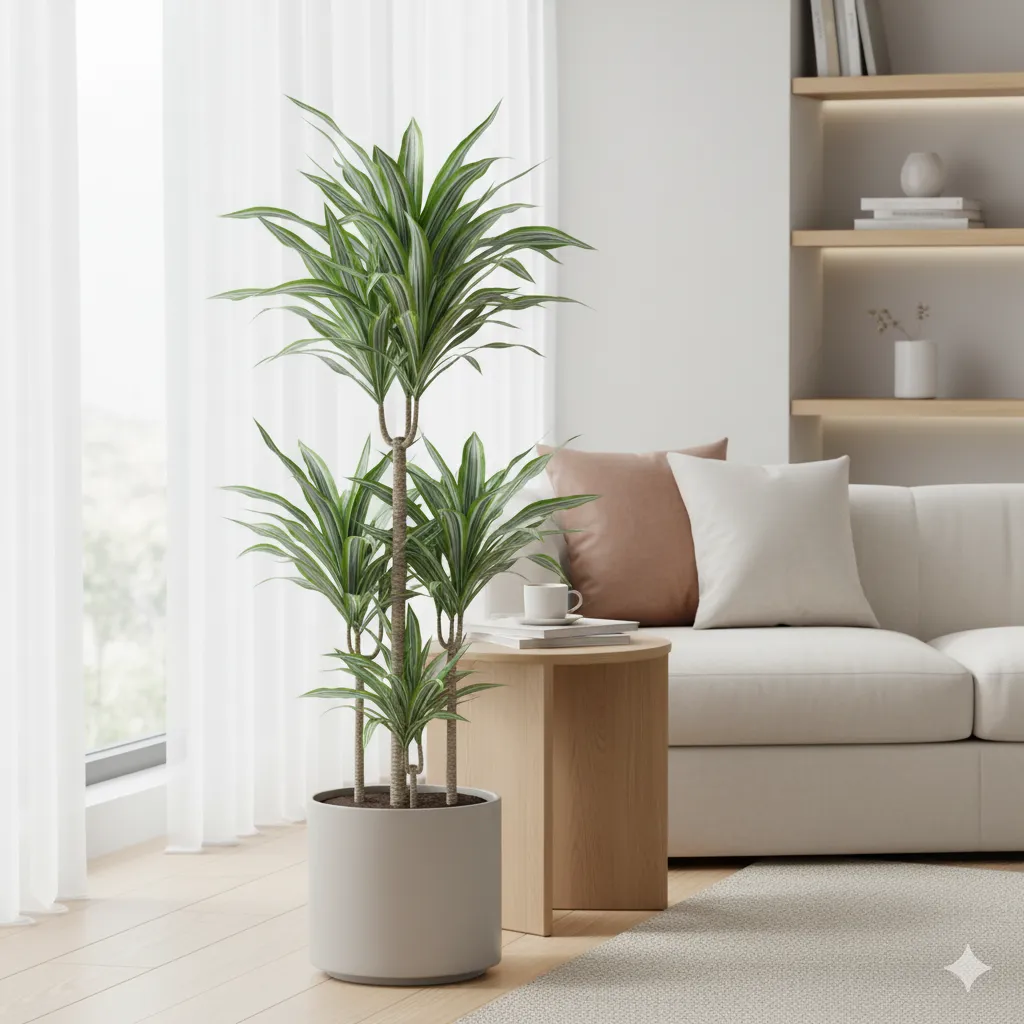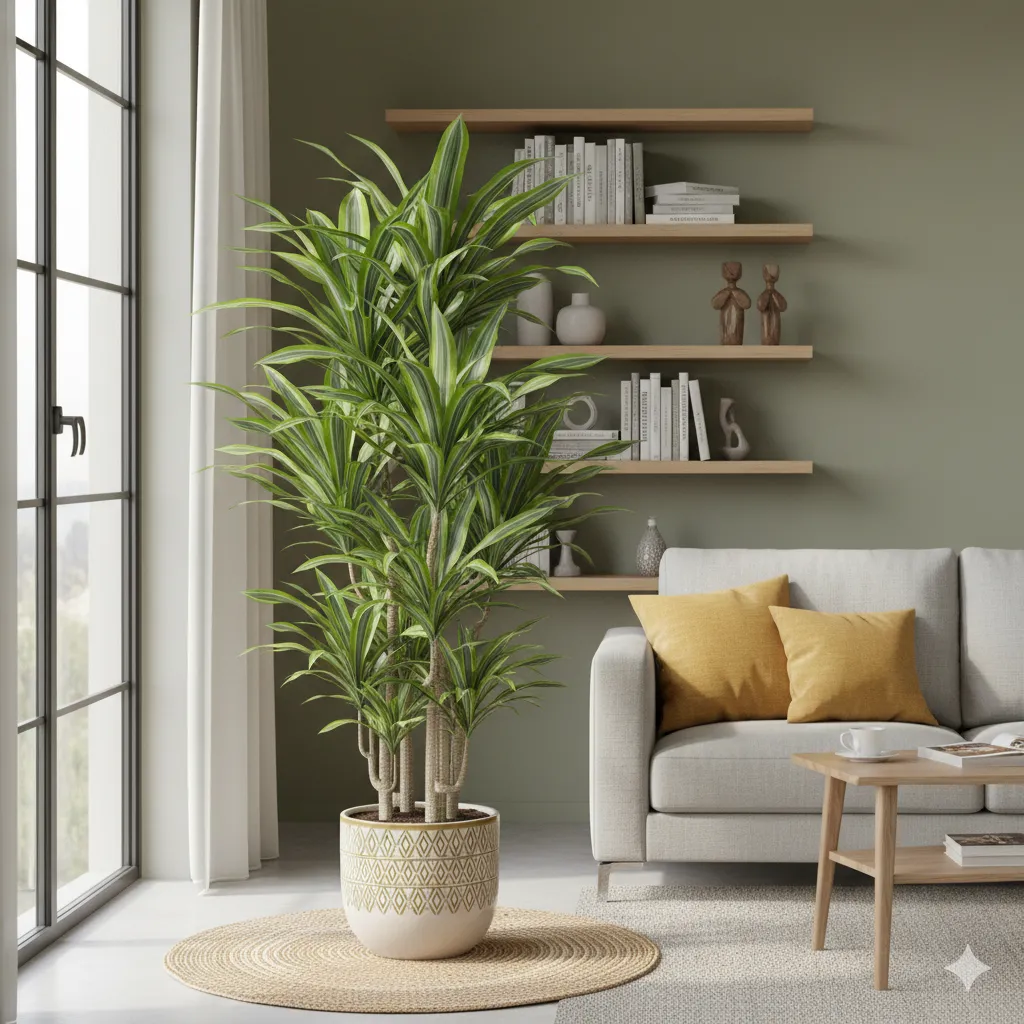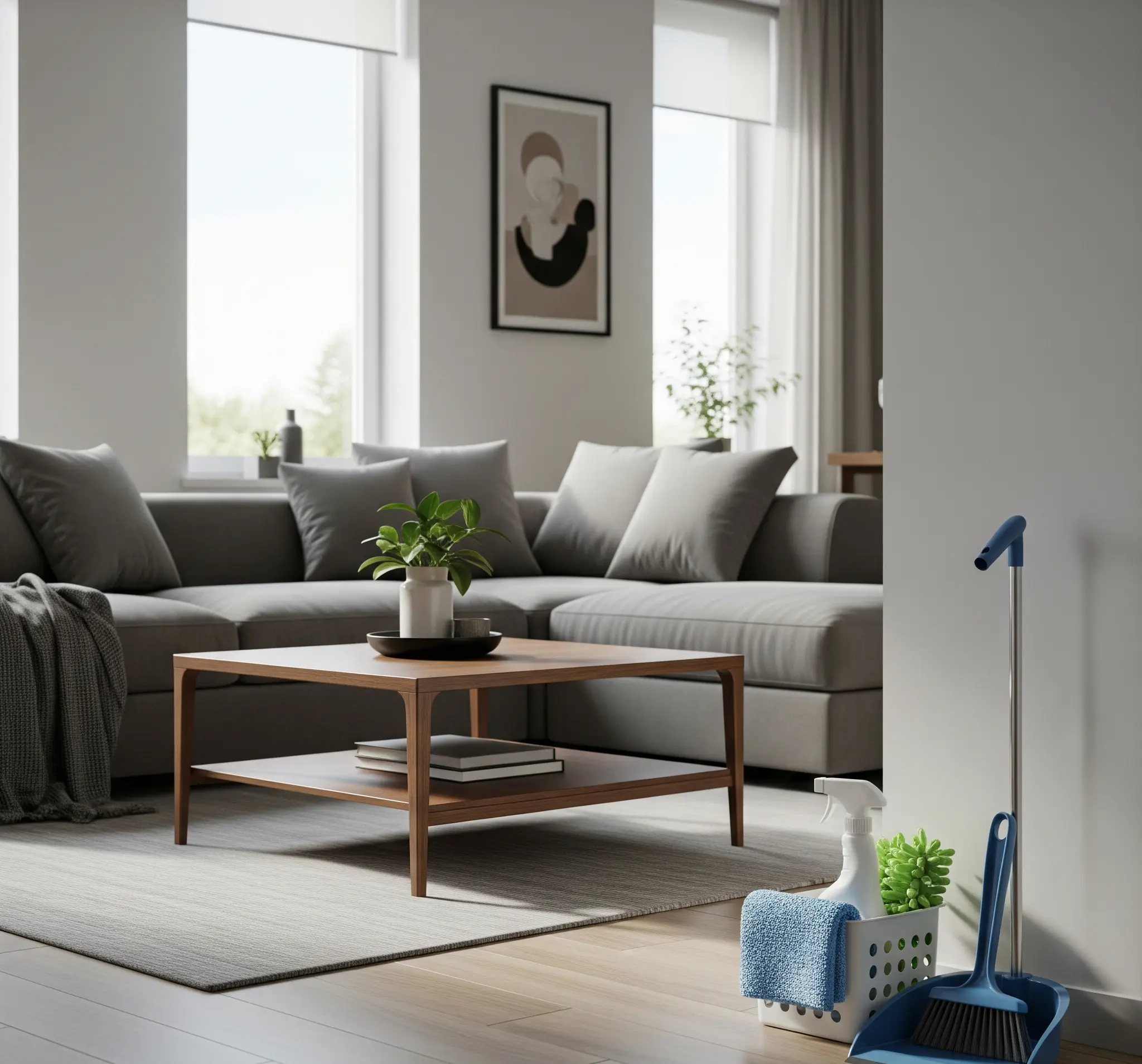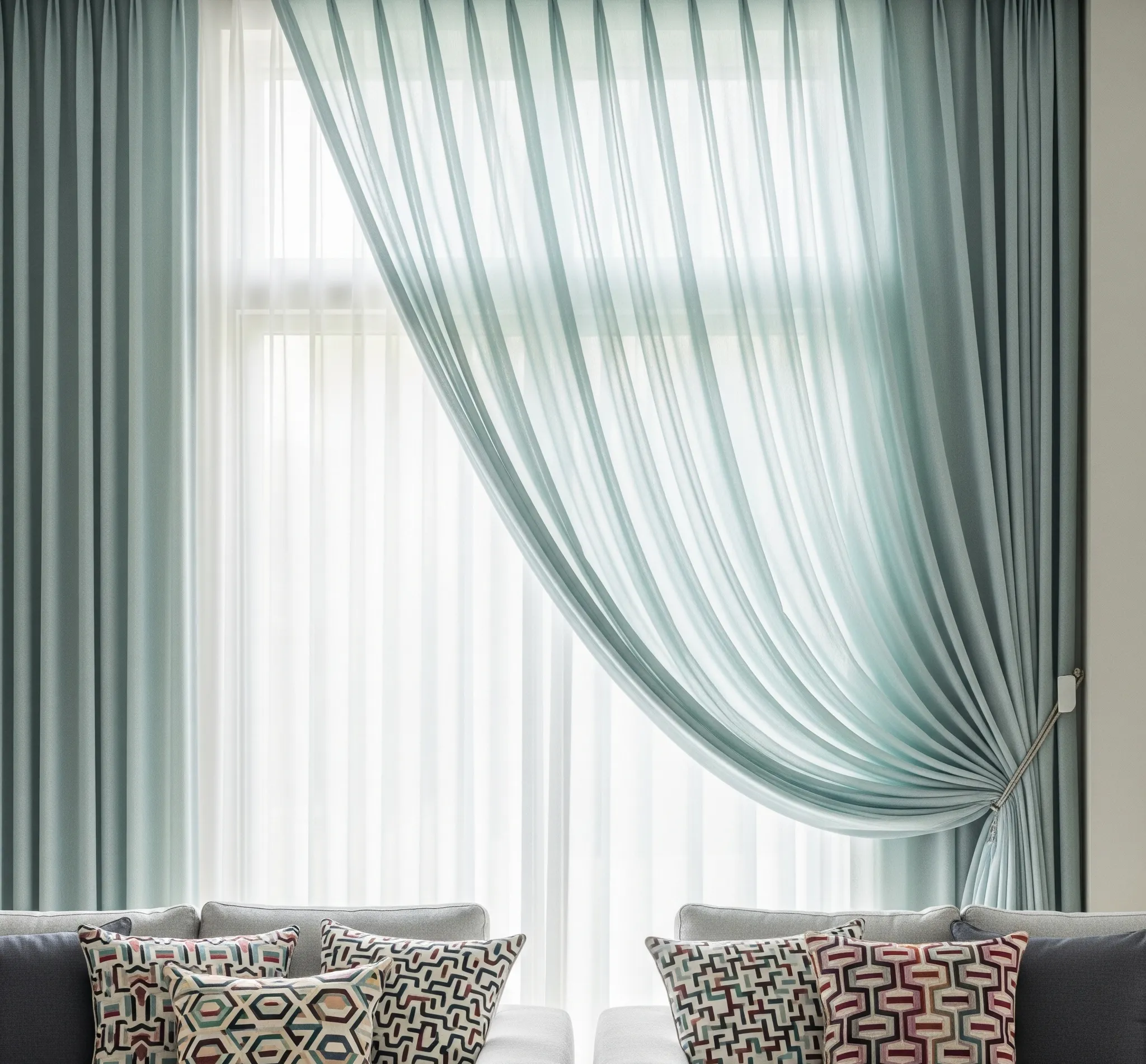Your dracaena doesn’t ask for much—some light, a drink now and then, and a pot that doesn’t cramp its style. In return, it gives you tall, sculptural leaves and serious “indoor jungle” vibes. Sounds fair, right?
If you’ve ever wondered why the tips brown, the leaves droop, or the whole thing suddenly goes dramatic, you’re in the right place. Let’s keep your indoor tree thriving without turning you into a full-time plant butler.
Meet the Dracaena: Low-Maintenance, High-Style
Dracaenas come in a bunch of varieties—marginata (spiky and architectural), fragrans (aka corn plant), lisa (sleek and upright), and more. They grow slowly, forgive minor neglect, and handle typical household conditions like champs. They tolerate lower light and inconsistent watering better than most “statement” plants.
Want a tree without the drama? You just found it.
Light: Bright-ish, Not Blazing
Dracaenas love bright, indirect light. A few feet from a sunny window works beautifully.
They’ll survive lower light, but growth slows and leaves can lose variegation.
Signs your light is off
- Too little light: Leggy growth, smaller new leaves, dull color.
- Too much direct sun: Crispy brown patches or faded leaves.
Aim for light that’s bright enough to read comfortably without turning on a lamp, but not a spot that blasts them with afternoon sun. Sheer curtains = your best friend.
Watering: Less Often Than You Think

Overwatering hurts more dracaenas than underwatering. Let the top 1–2 inches of soil dry before watering. In medium light, that usually means every 10–14 days.
In lower light, stretch it a bit longer. Always check the soil—don’t water on a fixed schedule like it’s a gym class.
How to water like a pro
- Water thoroughly until it drains out the bottom, then dump the saucer. No wet feet.
- Use room-temperature water.
Cold water can shock roots.
- FYI, dracaenas dislike fluoride and chlorine. If you get crispy tips, try filtered water or let tap water sit 24 hours before using.
Common watering red flags
- Overwatered: Yellow lower leaves, mushy stems, funky smell.
- Underwatered: Curling leaves, dry brown tips, soil pulling from the pot edges.
When in doubt, wait a day. Your dracaena would vote for “slightly dry” every time.
Soil, Pots, and Repotting: Give Those Roots Room

Dracaenas need well-draining soil.
A standard indoor potting mix works, but you’ll win bonus points by lightening it up.
Best mix (IMO)
- 2 parts all-purpose potting soil
- 1 part perlite or pumice
- Optional: a handful of orchid bark for airflow
Pick a pot with drainage holes. Terracotta dries faster (great for overwaterers), while ceramic/glazed holds moisture longer (better for forgetful folks). Repot every 2–3 years, or when roots circle the pot and water runs straight through.
Size up just 1–2 inches—no giant jump or you’ll risk soggy soil and root rot.
Humidity and Temperature: Comfortable Homebody
Dracaenas vibe with the same temps you do: 65–80°F (18–27°C). Keep them away from cold drafts, heat vents, or AC blasts. They don’t demand rainforest humidity, but they’ll appreciate a little extra moisture in winter.
Easy humidity boosts
- Place on a pebble tray with water (without touching the pot bottom to the water).
- Group plants together.
- Run a small humidifier if your air is desert-dry.
Brown tips?
Often low humidity or water quality. Fix those first before panic sets in.
Feeding and Growth: Slow and Steady
Dracaenas grow like chill turtles. Fertilize lightly during spring and summer—once a month with a balanced liquid fertilizer at half strength. Skip winter feedings.
Too much fertilizer can burn roots and cause browning, so don’t treat it like a protein shake situation.
Pruning and shaping
- Snip leggy canes just above a node. New growth will sprout below the cut.
- Remove dead or yellow leaves by pulling gently downward.
- Want a fuller look? Stagger cuts on different canes for branching.
Pro tip: You can root cane cuttings in water or moist perlite.
New plant, who dis?
Pests and Problems: Catch Them Early
Dracaenas don’t invite trouble, but pests still try. Check leaf undersides and leaf axils monthly.
Usual suspects
- Spider mites: Tiny dots and webbing; leaves look dusty. Mist and wipe leaves, then treat with insecticidal soap or neem.
- Mealybugs: White cottony blobs. Dab with alcohol on a cotton swab and follow up with soap sprays weekly for a few rounds.
- Scale: Brown bumps stuck to stems.
Scrape gently, then treat with horticultural oil.
Why are the tips brown?
- Low humidity
- Fluoride/chlorine sensitivity
- Overfertilizing
- Inconsistent watering
Trim tips with clean scissors, following the leaf’s natural point so it still looks cute. Fix the cause or you’ll just chase browning forever.
Pet Safety and Placement: Read This If You Have a Chewer
Here’s the not-so-fun part: Dracaena is toxic to cats and dogs if ingested. Symptoms include vomiting, drooling, and dilated pupils (especially in cats).
If your furry goblin likes to sample houseplants, place your dracaena out of reach or choose a pet-safe alternative. And no, telling your cat “no” won’t work. Cats are chaos.
Variety Spotlight: Which Dracaena Fits Your Vibe?
- Dracaena marginata: Thin, spiky leaves; super sculptural; loves bright, indirect light.
- Dracaena fragrans (Corn Plant): Broad leaves; classic “indoor tree” look; very forgiving.
- Dracaena ‘Lisa’: Dark, glossy leaves; elegant and upright; tolerates offices and lowish light well.
- Dracaena ‘Warneckii’: Striping adds drama; needs a bit more light to keep variegation sharp.
Pick the one that matches your space and your watering personality.
IMO, marginata brings the most “designer” energy with the least fuss.
Seasonal Care: Tiny Tweaks, Big Payoff
- Spring/Summer: Growth mode. Water a bit more often, feed monthly, rotate the pot for even growth.
- Fall/Winter: Slowdown mode. Water less, stop fertilizing, keep away from cold drafts, and boost humidity.
- Always: Dust leaves every few weeks so they can photosynthesize properly.
Clean leaves = happier plant.
FAQ
Why is my dracaena dropping leaves from the bottom?
Dracaenas shed older lower leaves as they grow taller—totally normal. If lots drop fast, check your watering routine and light. Too little light or chronically wet soil speeds up the leaf dump.
Can I keep a dracaena in low light?
Yes, but manage expectations.
It will grow slowly and may lose variegation. Move it closer to a window or add a grow light if you want faster growth and richer color.
How tall will my dracaena get indoors?
Many varieties reach 4–8 feet indoors over several years. You control the height with pruning.
Chop a cane, and it’ll branch—instant custom shape without a renovation budget.
Are brown leaf tips a death sentence?
Nope, just a cosmetic issue. Trim them and tweak humidity, water quality, or fertilizing. The plant can thrive with a few imperfect tips.
We all have our rough edges.
Can I propagate dracaena from cuttings?
Absolutely. Take a 4–6 inch cane cutting, let the cut end callus for a day, then root in water or a perlite/soil mix. Warmth and bright, indirect light speed things up.
New roots usually appear in a few weeks.
What’s the ideal pot size?
Choose a pot only 1–2 inches wider than the root ball. Oversized pots hold extra moisture and invite root rot. Small upgrades, big wins.
Conclusion
You don’t need plant wizardry to keep a dracaena thriving.
Give it bright, indirect light, infrequent but thorough watering, and well-draining soil, then step back and admire the vibe. Tweak for seasons, watch for pests, and trim as needed. Do that, and your indoor tree will pay you back with years of easy elegance—no drama, just green glory.
FYI: once you nail one dracaena, you’ll want three. Don’t say I didn’t warn you.

